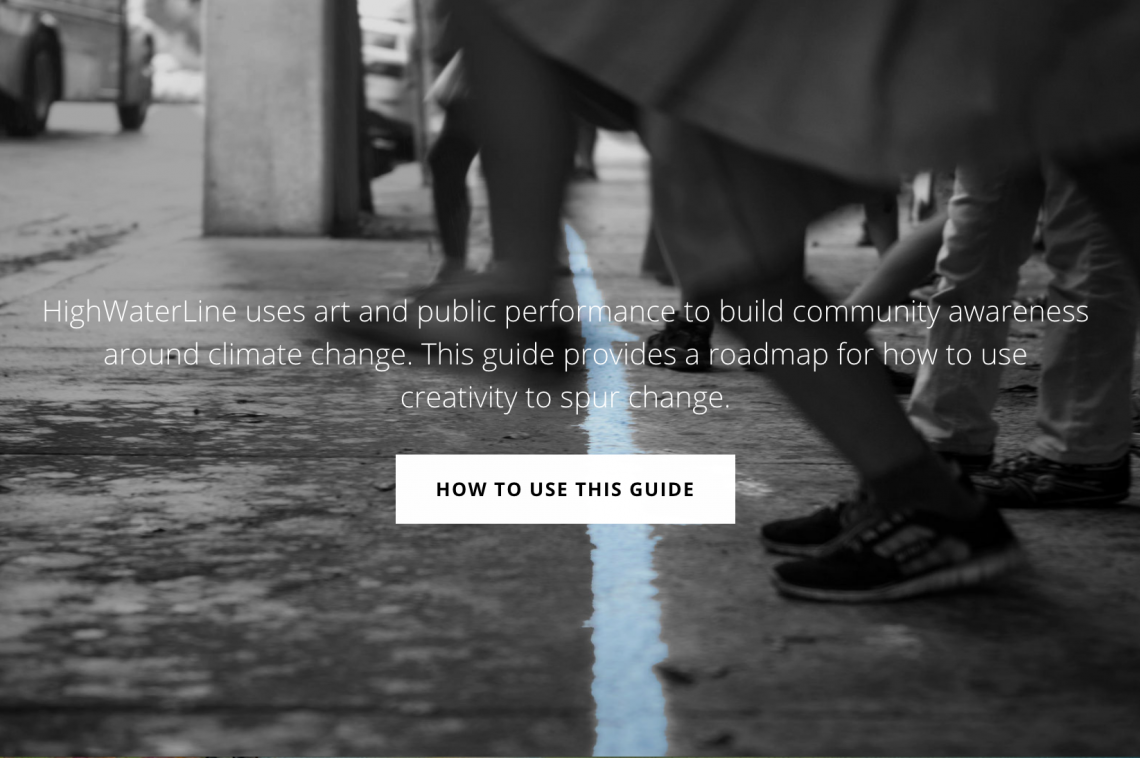
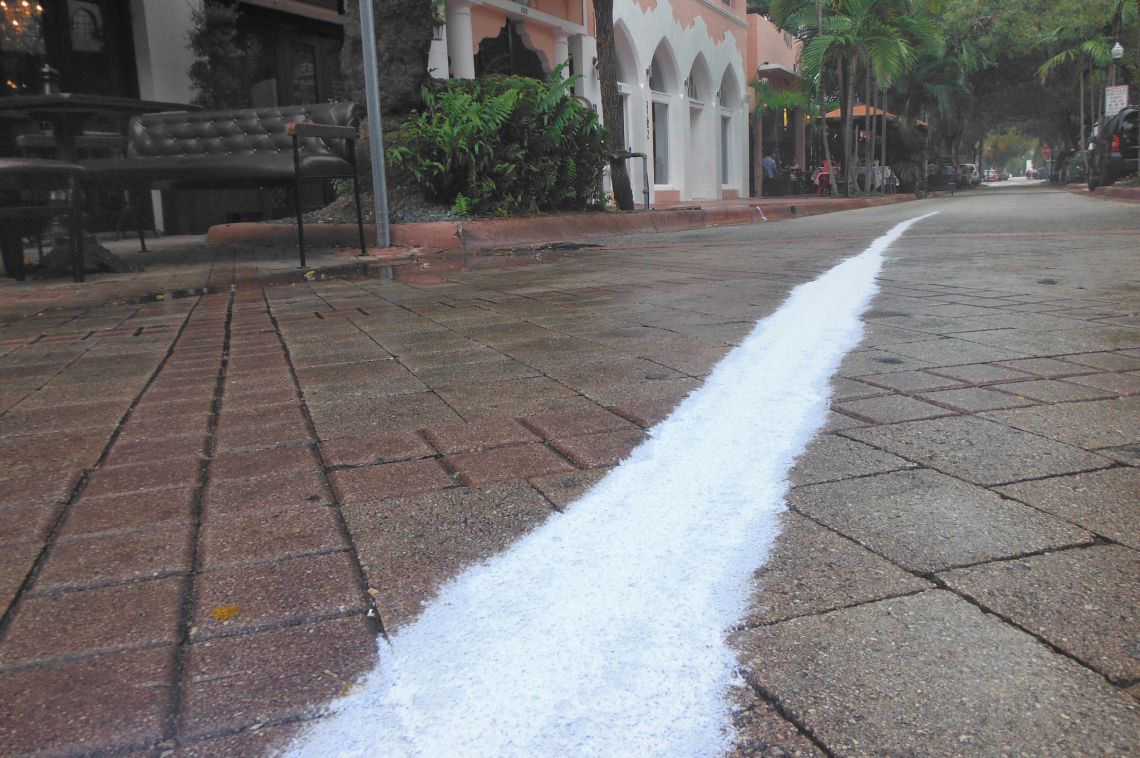
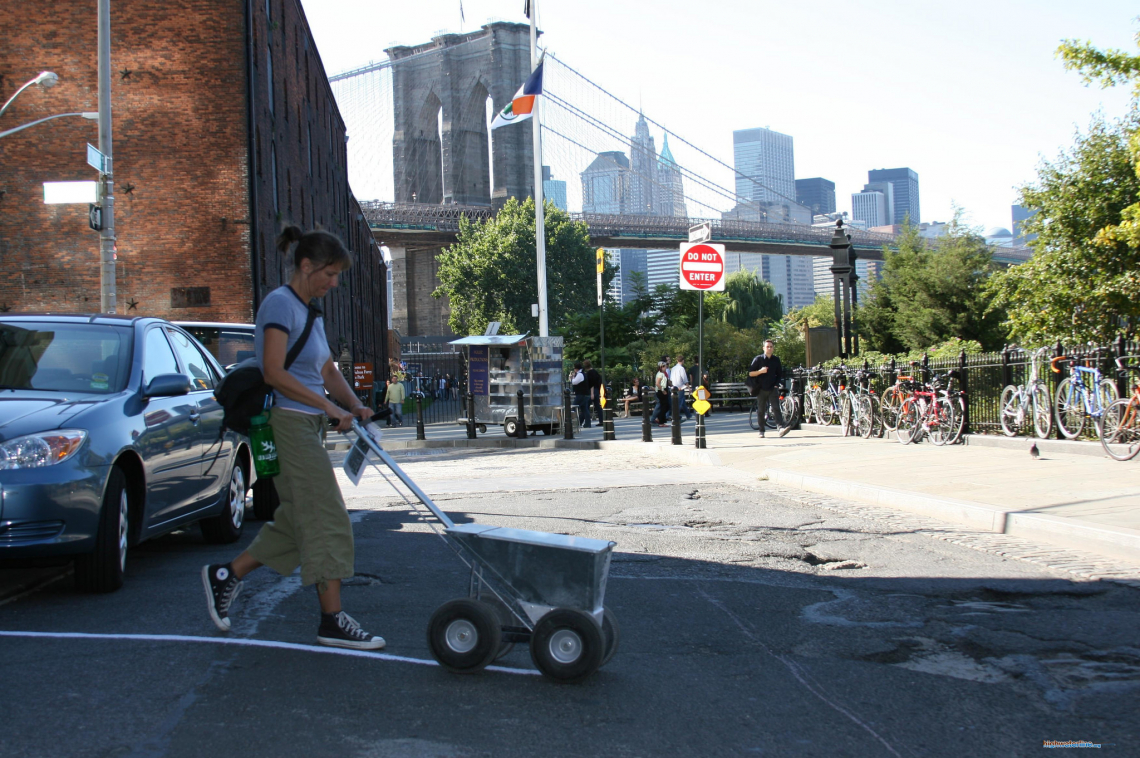
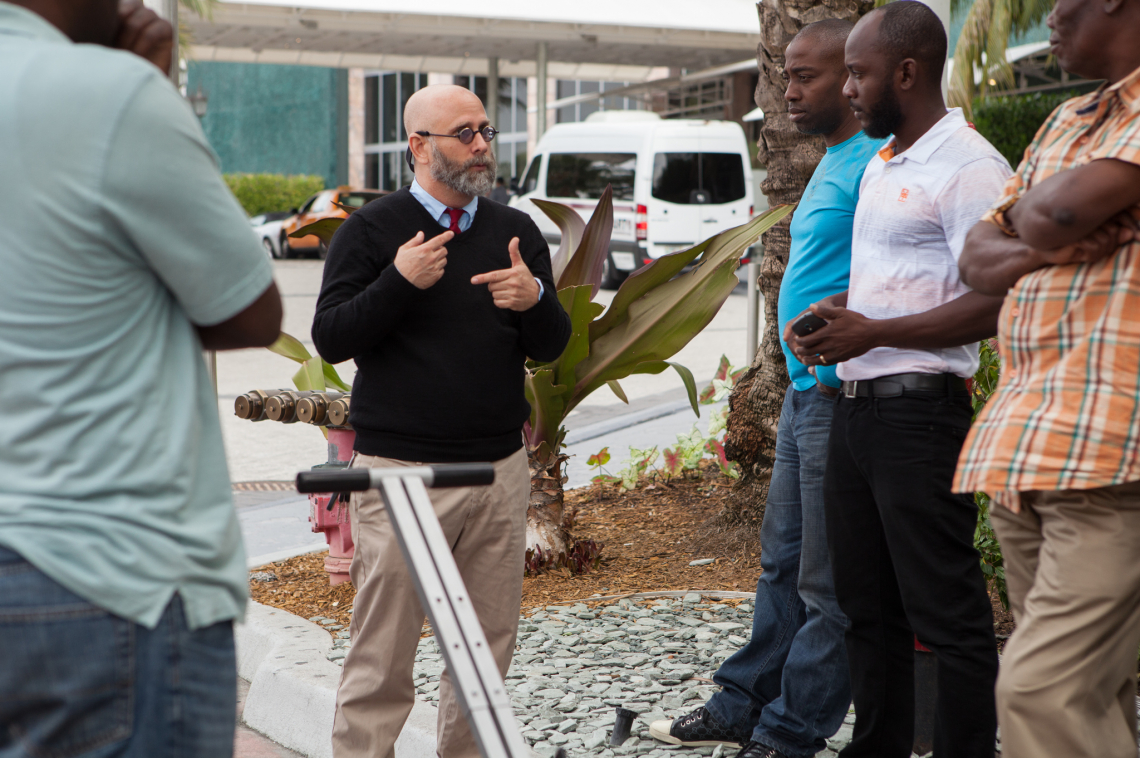
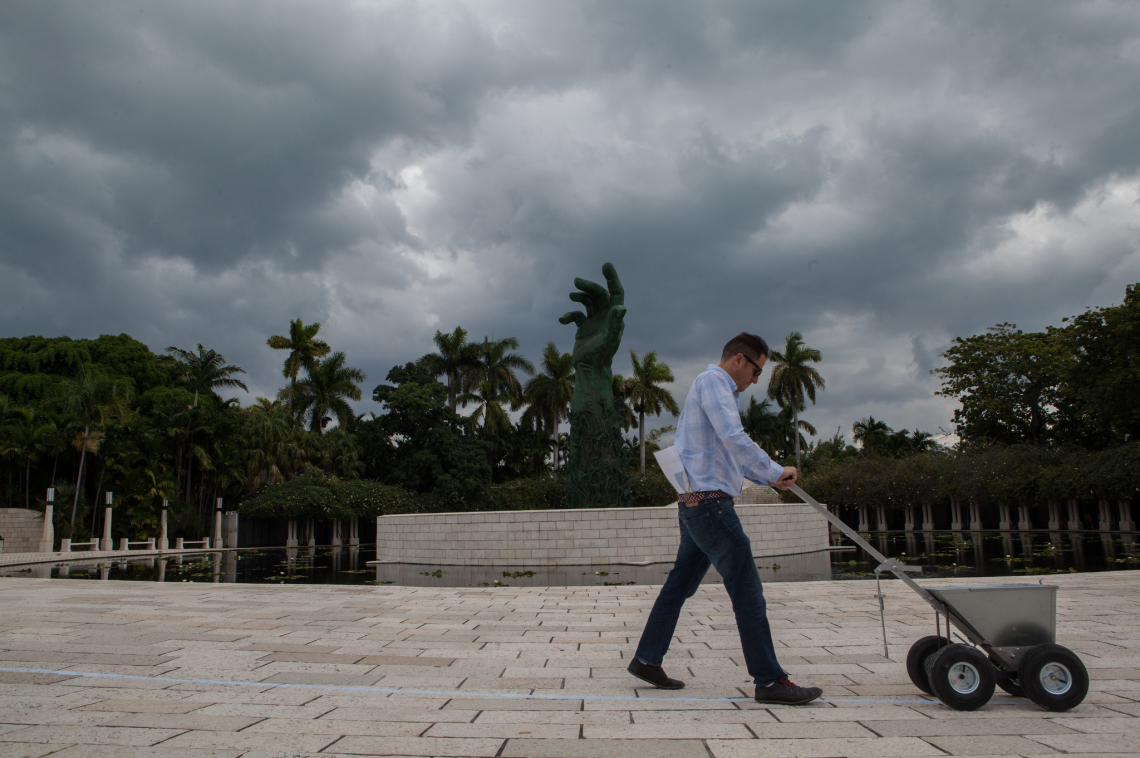
Art has an ability to occupy a space outside of the dry approach of science communication and the limited sound bite approach of the media. It offers a way into complex conversations through different modes of engagement - investigative, experiential and collaborative. As creative thinkers, we often approach things from a different point of view, pulling together disparate concepts and weaving them into an elegant tapestry. In working with communities, we use creativity to bring together people who might normally be segregated due to geographic, cultural or political reasons to collaboratively address a regional concern.
Drawing a line somewhere
In early 2006, I (Eve) became frustrated by the state of response to climate change in the US. I didn’t have money to throw at solutions, degrees to produce reports and papers, or the political power to influence decision makers, but I did have my skills as an artist that I could bring to bear on issues around climate change. Combining creativity with my interest in understanding the urban environment, I took to the streets to define the areas vulnerable to impacts of climate change by drawing a broad blue chalk line throughout the streets of NYC. This line represented the areas vulnerable to increased flooding and storm surge caused by climate change. I recognized that having real conversations - not lectures or media reports - with people, in the places where they live work and play could really shift perceptions on climate change. Additionally, the power of drawing a line, the simplest of artistic acts, can create a visceral and deep understanding of how the impacts are related to the spaces that we cherish.
I was lucky enough to be sought out by artist and creative catalyst Heidi Quante, who saw the potential of HighWaterLine to galvanize communities. We both saw the need for the project to speak to climate change on a deeply personal level. I had been invited to create the project in other cities. It made no sense for me to be the one learning about the vulnerabilities and potential solutions in neighborhoods that were not mine. It was more important to create a method for the community to retain its own knowledge and power.
HighWaterLine goes to Miami
In 2012, I (Heidi) approached Eve about bringing HighWaterLine to Miami and a coastal community in the UK, regions especially vulnerable to an increase in severe storms and sea level rise. When I approached Eve I had already devoted 12 years to working as a community organizer and creative communication consultant on climate change. Over the course of these 12 years I had become increasingly frustrated with many of the major U.S. environmental groups for their failure to effectively localize and personalize climate change. After studying behavioral science and learning how people genuinely learn new information and personalize issues, I became enchanted with the HighWaterLine, and saw it as a powerful catalyst for engaging communities on climate change. The artwork effectively localizes and personalizes an abstract global challenge by translating how places that are important to people are and will be impacted by this challenge.
Collaboration with Communities
We agreed that the process for creating the artwork was as equally important as the final artwork. We sought local collaborators who hailed from impacted communities who were genuinely excited to partner with us. We collaborated with local researchers, scientists, non-profits, architects, artists and more over a period of 4-6 months to create a site-specific iteration of the HighWaterLine. Local organizers like Marta Viciedo (Miami, U.S.) and Isobel Tarr (Bristol, UK) were key to the success of this new iteration of the project. Their tireless efforts in coalition building in the coastal areas helped create a real sense of unity within the participating communities. We started each HighWaterline by establishing trust through personal story sharing amongst the core participants. Local experts on climate change related impacts and regional solutions provided data to help determine the local path of their HighWaterLine. As the artwork relies on community members to determine the route and physically create the local iteration, participants shift from being observers of an issue to active educators. It also provided a novel space for much needed conversations to be had amongst neighbors about both the local threats and solutions to climate change. Because the workshops and shared experience of drawing the line/speaking with the public builds momentum in the community, we sought to also support local organizers in realizing their regional solutions after the performance was completed.
Do your own HighWaterLine project
We are both interested in collaborating with communities because of a strong belief that this is where real change happens. Historically all great shifts start at the grassroots. We are also committed to sharing new tools and tactics with frontline communities while simultaneously learning from their regional expertise. To that end we have created freely available and expansive online tool “Guide to Creative Community Engagement.” Based on our experience producing this work in a variety of environments (six so far!) and with a variety of partnerships, we have created a guide for HighWaterLine from start to finish. The Guide includes timelines and how-to’s as well as best practices and pitfalls, all aimed at equipping artists interested in working with communities and communities interested in undertaking creative responses to local issues. We also continue to offer our services, consulting on regional HighWaterLine projects as well as other creative community endeavors.
In all of this work, it is essential to be supported by those who understand the power of interdisciplinary initiatives. Just as healthy ecosystems require a diversity of species to thrive and adapt to changes, so too does society. We are thankful for the essential support from The Compton Foundation, Invoking The Pause, Kresge Foundation, LUSH Foundation, Miami Foundation, Whitman Institute, Arts Council England, Invisible Dust and the 11th Hour Project. All of these funders recognize innovative solutions are birthed when the arts, science, and community organizing are brought together to devise new responses to today’s challenges.
As we both independently continue to work on issues in our own regions - Heidi on water in California and Eve on the challenges of urban waterways on the East Coast - we consistently return to work that is interdisciplinary and rooted in community. In order to tackle the challenges that humanity faces due to a changing climate, we will need innovative solutions that bring diverse disciplines together to harness the power of a collective response.
Learn more about Eve’s work at: www.evemosher.com.
Learn more about Heidi's work at: www.creativecatalysts.org





